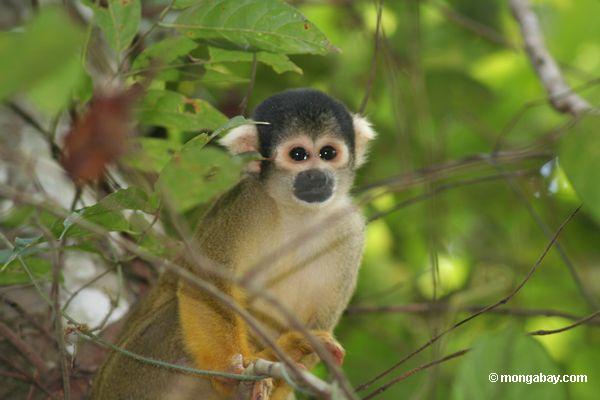Reproduction

Female squirrel monkeys are mature at age 2 1/2, while males are mature at age 4. During the wet season is when reproduction usually takes place because there is a surplus amount of fruits and plenty of greens. The mother is pregnant (or in gestation) for just about 142 days and the actual "birthing process" takes about 80-165 minutes. The male monkey does not have anything to do with raising the baby, so other mothers that are either pregnant or have already have babies, kind of like how it is now, help that mother. The baby will stay with his mother, start sucking, and then begin eating solids for the first few weeks after birth. After about 6 months the baby is ready to be apart from his mother and will then go on to live his life. As strange as it seems, squirrel monkeys only give birth to one monkey in their entire lifetime (6). This being said, monkeys need to reproduce a lot and quite frequently to have as many as we see in the wild today.
Lincoln Park Zoo
Established in 2000, the Lincoln Park Zoo is dedicated to helping our environment and to keep the protection of our animals and prepare for the future of our nature's world. Lincoln Park Zoo keeps in accordance with the Population Management Center (PMC), Association of Zoos and Aquariums (AZA), Species Survival Plan (SSP), and Population Management Plan (PMP). This zoo works with the genetic breedings and transferring of animals around the world to kind of give the animals a "kick start" (7).





